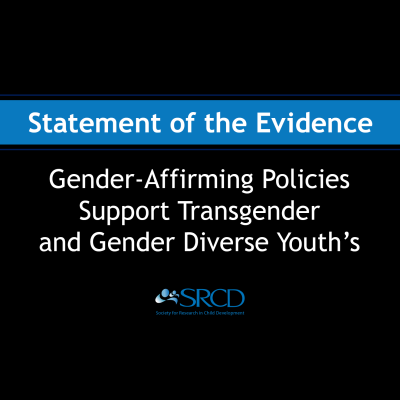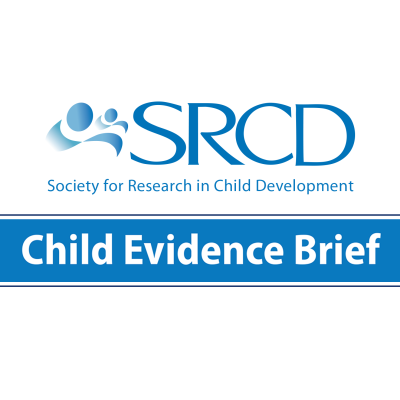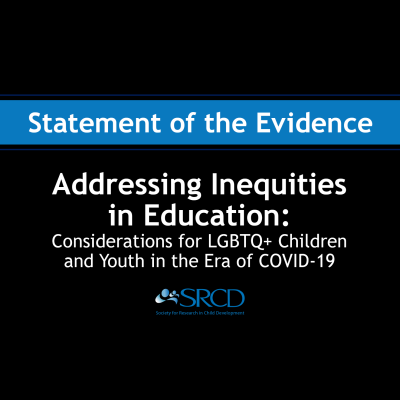Child Care and COVID-19: Support Children by Investing in Early Educators and Program Sustainability
Author
- Kathryn Tout, Ph.D., Child Trends
The COVID-19 pandemic exposed the longstanding vulnerability of early care and education programs and inequities in the health and financial security of early educators. Addressing new and ongoing needs in the early care and education system (including schools, centers, and homes) is critical to supporting the well-being of children who rely on child care. Prior to March 2020, over 7.75 million children under 6 were cared for in regulated child care programs by one million early educators in center-based programs and one million paid home-based early educators.1 While deemed an essential service, child care programs suffered volatile impacts of the pandemic without the support and existing infrastructure available to other businesses. Policy strategies for recovery and rebuilding must address the short- and long-term needs of child care programs and the early educators who work in them. Attention is needed to address disparities in the experiences of early educators who are Black and Hispanic. Actions to support programs and the workforce can ultimately benefit children and families served in child care.
High Quality Child Care is an Essential Service for Children and Families
The quality and continuity of children’s relationships and experiences in child care shape their cognitive, behavioral, and emotional development in early childhood and into later life.2, 3 Early educators’ health, well-being, and stability also matter for children’s development,3 especially during the pandemic when many children are experiencing instability and stress due to COVID-19-related job and income loss in their families.4 Early educators in homes and child care centers have endured increases in already-elevated levels of food and financial insecurity, stress, and depression during the pandemic.5, 6 These stresses impede their capacity to provide responsive and supportive care to children. Threats to early educators’ physical and mental health are detrimental to themselves, the stability of their child care programs, and the children they serve.7
Already Challenged, the Financial Stability of Child Care Programs Deteriorated due to COVID-19
Child care programs operated on a precarious foundation before, with increased challenges due to the pandemic.8
- In centers, the price for parents is high while wages for staff are low. For example, the annual price of care for two children (an infant and four-year old) using center care in the Northeast was $26,102 in 2018, 41% of the median U.S. household income.9
- Yet staff in child care centers are paid a median wage of $11.65 per hour, nearly poverty-level wages.10 Over half of child care workers receive public income supports (such as the Earned Income Tax Credit or Supplemental Nutrition Assistance Program), and typically have few benefits.11 Research finds that low wages and limited benefits are associated with higher staff turnover and lower quality care.12
- Cost studies indicate that profit margins are small, putting businesses at risk of downsizing or closure due to pandemic-related enrollment declines, increased costs (such as personal protective equipment), and decreased revenue.13 The Bureau of Labor Statistics documented a loss of nearly 175,000 child care jobs in 2020.14 In a survey conducted in November 2020, one in four centers and one in three family child care programs indicated that they will close permanently without additional financial support, further contributing to workforce destabilization among both child care providers and the parents using their services.15
Early Educator Well-Being is Jeopardized Even Further by COVID-19
Early educator well-being has implications for the children served in programs as well as providers’ own families and children.3, 7 Financial and health-related stressors disproportionately affect Black and Hispanic women who make up 40% of the child care workforce and who earn lower wages than their white peers.16 Job stress, burnout, and depressive symptoms are commonly reported by early educators and are associated with both diminished quality of learning environments and high job turnover.17
- Early educators’ financial instability and stress have increased further during the pandemic, particularly among staff in community-based centers because of lower wages, fewer benefits, and less flexible work environments compared to school-based prekindergarten programs.18
- Mental health challenges have grown: 30 – 40% of early educators report high levels of depressive symptoms and anxiety in recent surveys.5, 19, 20
- Providers report concerns about work-based COVID-19 exposure and feel expected to work even if they are sick, placing their colleagues and the children they care for at risk.5, 21
- Pervasive structural inequities across the early care and education workforce have been deepened by the pandemic, with Black, Hispanic, and Native American populations experiencing higher rates of COVID-19 infection, hospitalization, and morbidity.22, 23
Options for supporting young children in child care require both short- and long-term strategies to address program sustainability, quality, and the well-being of early educators and the children and families they serve.
Changes in Rules, Monitoring, and Support Have Implications for Child Care Safety and Quality
COVID-19-related requirements for child care programs required increased vigilance and hygiene practices yet were not reliably accompanied by essential guidance, monitoring, and financial support to ensure effective implementation. Most states implemented reduced group sizes and social distancing provisions in child care programs24 but decreased on-site monitoring and enforcement.25 State surveys indicate that providers need further training and guidance to help them translate new requirements into their daily practices with children.26-28
In addition, recent surveys find early educators worry that child care quality has declined.5, 20 Providing responsive and stimulating care during the pandemic presents new challenges for early educators. Pandemic stresses have led to increased behavioral and emotional needs among children.29 Early educators report that training and increased supports for children’s behavioral and emotional development are high priorities.5
Supports for Children Using Child Care and the Early Educators Who Care for Them
Growing evidence documents how the COVID-19 pandemic has destabilized child care and early education programs. Options for supporting young children in child care require both short- and long-term strategies to address program sustainability, quality, and the well-being of early educators and the children and families they serve.
- Additional funding to stabilize child care programs and cover increased costs should be only one piece of a coordinated approach that acknowledges and addresses identified financial challenges, including high costs for parents, low wages and limited benefits for early educators, and unstable financing in the early care and education system. These challenges inhibit consistent provision of quality early care and education.
- Policies are needed to address early educators’ stated need for additional training and support in implementing new safety guidelines, and their concerns about exposure to or spreading of COVID-19 infections while they are caring for children.
- Increased access to mental health services to address the growth in early educators’ stress, depression, and anxiety, and strategies to promote children’s behavioral and emotional development during the pandemic are critical needs.
- Placing equity as a central goal will be important when developing and implementing initiatives to ensure that early educators and children of color are not further and disproportionately harmed by the pandemic.
Endnotes/References
(1) National Survey of Early Care and Education Project Team. (2014). Characteristics of center-based early care and education programs: Initial findings from the National Survey of Early Care and Education (NSECE) (Report No. 2014-73a). Office of Planning, Research, and Evaluation, Administration for Children and Families, U. S. Department of Health and Human Services. https://www.acf.hhs.gov/sites/default/files/documents/opre/characteristics_of_cb_ece_programs_111014.pdf
(2) National Academies of Sciences, Engineering, and Medicine. (2018). Transforming the financing of early care and education. The National Academic Press. http://doi.org/10.17226/24984
(3) Institute of Medicine and National Research Council. (2015). Transforming the workforce for children birth through age 8: A unifying foundation. The National Academies Press. https://doi.org/10.17226/19401
(4) Gassman-Pines, A., & Gennetian, L. A. (2020). COVID-19 job and income loss jeopardize child well-being: Income support policies can help (Issue Brief No. 9). Society for Research in Child Development. https://www.srcd.org/sites/default/files/resources/FINAL_SRCDCEB-JobLoss.pdf
(5) Daro, A., & Gallagher K. (2020). The Nebraska COVID-19 early care and education provider survey II: Experiences, economic impact, and ongoing needs. University of Nebraska, Buffett Early Childhood Institute. https://buffettinstitute.nebraska.edu/-/media/beci/docs/provider-survey-2-080420-final.pdf
(6) Markowitz, A. J., Bassok, D., Smith, A., & Kiscaden, S. (2020). Child care teachers' experiences with COVID-19: Findings from the study of early education in Louisiana (Report No. 2). Study of Early Education: Louisiana. https://files.elfsight.com/storage/022b8cb9-839c-4bc2-992e-cefccb8e877e/a9f96482-73b5-4daa-afbd-dcec0741670b.pdf
(7) Jennings, P. A., Jeon, L., & Roberts A. M. (2020). Introduction to the special issue on early care and education professionals’ social and emotional well-being. Early Education and Development, 31(7), 933-939. https://doi.org/10.1080/10409289.2020.1809895
(8) Burwick, A., Davis, E., Karoly, L., Schulte, T., & Tout, K. (2020). Promoting sustainability of child care programs during the COVID-19 Pandemic: Considerations for States in allocating financial resources. (OPRE report #2020-175). Office of Planning, Research, and Evaluation, Administration for Children and Families, U. S. Department of Health and Human Services.
(9) Child Care Aware of America. (2019). The US and the high price of child care: An examination of a broken system. Child Care Aware of America. https://cdn2.hubspot.net/hubfs/3957809/2019%20Price%20of%20Care%20State%20Sheets/Final-TheUSandtheHighPriceofChildCare-AnExaminationofaBrokenSystem.pdf
(10) Bureau of Labor Statistics, U.S. Department of Labor. (2021, January 21). Occupational outlook handbook: childcare workers. Bureau of Labor Statistics. https://www.bls.gov/ooh/personal-care-and-service/childcare-workers.htm
(11) Whitebook, M., McLean, C., Austin, L. J., & Edwards, B. (2018). Early childhood workforce index - 2018. Center for the Study of Child Care Employment. https://cscce.berkeley.edu/wp-content/uploads/2018/06/Early-Childhood-Workforce-Index-2018.pdf
(12) Bassok, D., Markowitz, A. J., Bellows, L., & Sadowski, K. (2021). New evidence on teacher turnover in early childhood. Educational Evaluation and Policy Analysis, 43(1), 172–180. https://doi.org/10.3102/0162373720985340
(13) Grunewald, R., Horowitz, B., & Nunn, R. (2020). Financial assistance for child care providers: Key considerations during COVID-19. https://www.minneapolisfed.org/article/2020/financial-assistance-for-child-care-providers-key-considerations-during-covid-19
(14) U.S. Bureau of Labor Statistics. (2021). BLS Data Viewer: All employees, child day care services, seasonally adjusted [Data Set]. https://beta.bls.gov/dataViewer/view/timeseries/CES6562440001
(15) National Association for the Education of Young Children. (2020). Am I next? Sacrificing to stay open, child care providers face a bleak future without relief. https://www.naeyc.org/sites/default/files/globally-shared/downloads/PDFs/our-work/public-policy-advocacy/naeyc_policy_crisis_coronavirus_december_survey_data.pdf
(16) Austin, L. J., Edwards, B., Chavez, R., & Whitebook, M. (2018). Racial wage gaps in early education employment. Center for the Study of Child Care Employment. https://cscce.berkeley.edu/racial-wage-gaps-in-early-education-employment/
(17) Johnson, A. D., Phillips, D. A., & Partika, A. (2020). Everyday heroes: The personal and economic stressors of early care and education teachers serving low-income children. Early Education and Development, 31(7), 973-993. https://doi.org/10.1080/10409289.2020.1785266
(18) Bassok, D., Markowitz, A., & Michie, M. (2020). COVID-19 highlights inequities in how we treat early educators in child care vs. schools. https://www.brookings.edu/blog/brown-center-chalkboard/2020/10/23/covid-19-highlights-inequities-in-how-we-treat-early-educators-in-child-care-vs-schools/
(19) Hanno, E. C., Gonzalez, K. E., Gardner, M., Jones, S. M., Lesaux, N. K., Hofer, K., Checkoway, A., & Goodson, B. (2020). Pandemic meets preschool: Impacts of the COVID-19 outbreak on early education and care in Massachusetts. Saul Zaentz Early Education Initiative, Harvard Graduate School of Education. https://zaentz.gse.harvard.edu/wp-content/uploads/2020/08/ELS@H-COVID-Report_-ECE-Providers_Final_2.pdf
(20) Bassok, D., Michie, M., Cubides-Mateus, D. M., Doromal, J. B., & Kiscaden, S. (2020). The divergent experiences of early educators in schools and child care centers during COVID-19: Findings from Virginia (Virginia PDG B-5 Evaluation SEE-Partnerships Report). University of Virgina: EdPolicy Works. https://files.elfsight.com/storage/022b8cb9-839c-4bc2-992e-cefccb8e877e/710c4e38-4f63-41d0-b6d8-a93d766a094c.pdf
(21) Markowitz, A. J., Bassok, D., Smith, A., & Kiscaden, S. (2020). Child care teachers' experiences with COVID-19: Findings from the study of early education in Louisiana (Report No. 2). Study of Early Education: Louisiana. https://files.elfsight.com/storage/022b8cb9-839c-4bc2-992e-cefccb8e877e/a9f96482-73b5-4daa-afbd-dcec0741670b.pdf
(22) Center for Disease Control and Prevention. (2021). Risk for COVID-19 infection, hospitalization, and death by race/ethnicity. https://www.cdc.gov/coronavirus/2019-ncov/covid-data/investigations-discovery/hospitalization-death-by-race-ethnicity.html
(23) Gilliam, W. S., Malik, A. A., Shafiz, M., Klotz, M., Reyes, C., Humphries, J. E., Murray, T., Elharake, J. A., Wilkinson, D., & Omer, S. B. (2021). COVID-19 transmission in US child care programs. Pediatrics, 147(10), 1-9. https://doi.org/10.1542/peds.2020-031971
(24) Hunt Institute. (2021). COVID-19 state child care actions. [Data Set]. https://hunt-institute.org/covid-19-resources/state-child-care-actions-covid-19/
(25) National Association for Regulatory Administration. (2020). Remote inspections in child care settings: A viable alternative during emergency situations. National Association for Regulatory Administration. https://nara.memberclicks.net/assets/docs/Publications/VirtualInspections/REMOTE%20INSPECTIONS%20IN%20CHILD%20CARE%20SETTINGS%20July%202020.pdf
(26) Doocy, S., Kim, Y., & Montoya, E. (2020). California child care in crisis: The escalating impacts of COVID-19 as California reopens. Center for the Study of Child Care Employment. https://cscce.berkeley.edu/california-child-care-in-crisis-covid-19/
(27) Parr, K. E., Pilon, K., Polar, J., & Mukherjee, B. (2020). Review of early childhood education business needs survey. The OEC-UConn Research Partnership. https://www.ctoec.org/wp-content/uploads/2020/06/Early-Childhood-Education-Needs-Business-Survey.pdf
(28) Home Grown Childcare. (2020). Home-based child care during COVID-19: Preliminary data from home grown emergency fund communities. https://homegrownchildcare.org/wp-content/uploads/2020/10/HomeGrown_HomeBasedChildCare.pdf
(29) Patrick, S. W., Henkhaus, L. E., Zickafoose, J. S., Lovell, K., Halvorson, A., Loch, S., . . . Davis, M. M. (2020). Well-being of parents and children during the COVID-19 pandemic: A national survey. Pediatrics, 146(4). http://doi.org/10.1542/peds.2020-016824


